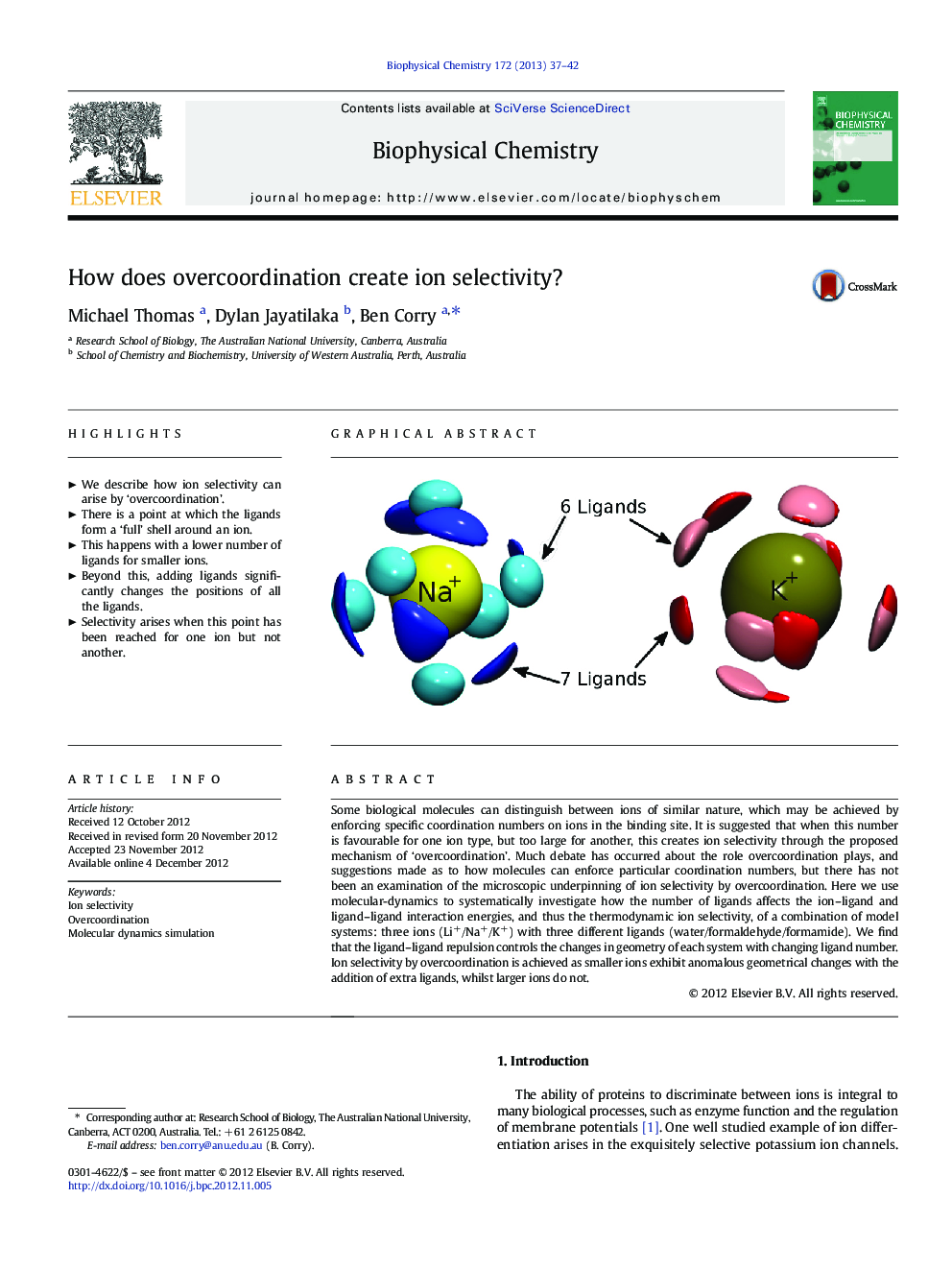| Article ID | Journal | Published Year | Pages | File Type |
|---|---|---|---|---|
| 5371164 | Biophysical Chemistry | 2013 | 6 Pages |
Some biological molecules can distinguish between ions of similar nature, which may be achieved by enforcing specific coordination numbers on ions in the binding site. It is suggested that when this number is favourable for one ion type, but too large for another, this creates ion selectivity through the proposed mechanism of 'overcoordination'. Much debate has occurred about the role overcoordination plays, and suggestions made as to how molecules can enforce particular coordination numbers, but there has not been an examination of the microscopic underpinning of ion selectivity by overcoordination. Here we use molecular-dynamics to systematically investigate how the number of ligands affects the ion-ligand and ligand-ligand interaction energies, and thus the thermodynamic ion selectivity, of a combination of model systems: three ions (Li+/Na+/K+) with three different ligands (water/formaldehyde/formamide). We find that the ligand-ligand repulsion controls the changes in geometry of each system with changing ligand number. Ion selectivity by overcoordination is achieved as smaller ions exhibit anomalous geometrical changes with the addition of extra ligands, whilst larger ions do not.
Graphical abstractDownload full-size imageHighlights⺠We describe how ion selectivity can arise by 'overcoordination'. ⺠There is a point at which the ligands form a 'full' shell around an ion. ⺠This happens with a lower number of ligands for smaller ions. ⺠Beyond this, adding ligands significantly changes the positions of all the ligands. ⺠Selectivity arises when this point has been reached for one ion but not another.
